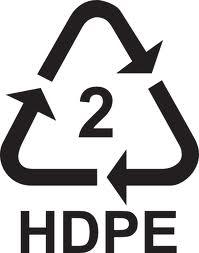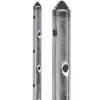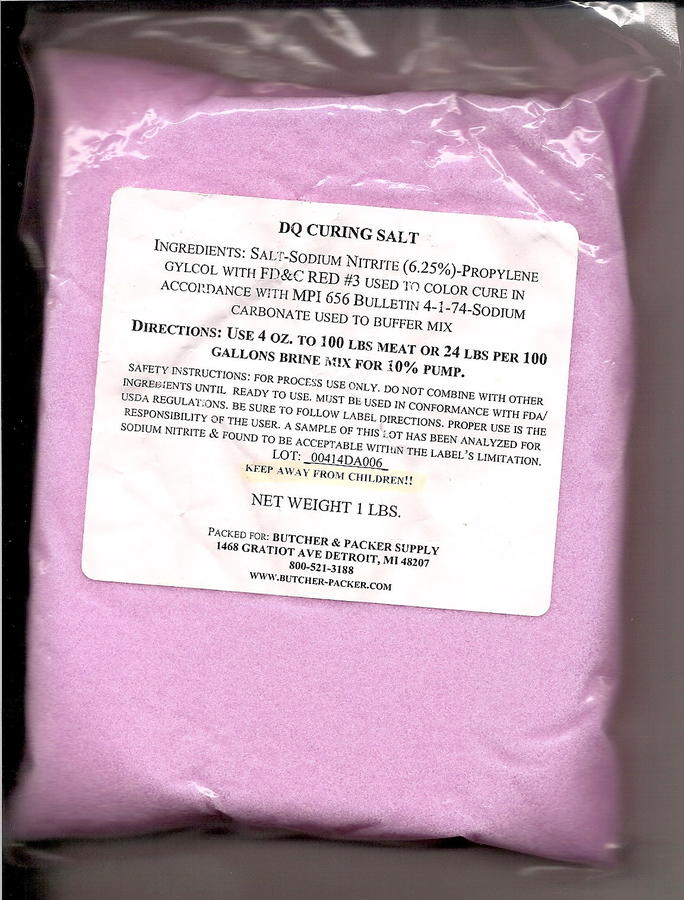CURING
There are two major forms of curing - wet and dry.
I can speak of WET curing - the art of curing in a wet curing brine, that is what I have experience in.
In wet curing, you need to make up a curing brine that has various ingredients. From another Article:
http://www.smokingmeatforums.com/a/pops6927s-curing-brines-regular-and-lo-salt
[h1]Pops6927's Curing Brines - Regular and Lo-Salt[/h1]

By: Pops6927
Posted 10/27/14 • Last updated 10/27/14 • 2,331 views •
These are my Curing brines for pork, beef (corned and dried), poultry, and so on.
Regular Curing Brine:
1 gallon of clean water
1 cup plain, regular non-iodized table salt
1 cup sugar or sucrolose
1 cup brown sugar or sucrolose equiv.
1 tablespoon of Cure#1
Lo-Salt Curing Brine:
1 gallon of clean water
½ cup plain, regular non-iodized rable salt
½ cup sugar or sucrolose
½ cup brown sugar or sucrolose equiv.
1 tablespoon of Cure #1
mix in food-safe container, stir until clear.
Food Safe Symbol:
Add meat. Do not add different species of meats, but you can add pieces of the same species.
Refrigerate 1 to 30 days, depending on thickness of meat.
Up to 2 inches, 1-10 days.
2 - 4 inches, 5 - 15 days, may require injecting to cure from the inside-out as well as from the outside-in.
4 inches and larger. 15 - 21 days, requires injecting.
Injecting - use a Morton's injection 4 oz. manual injection pump with the Broadcast needle.
or equivalent.
Brine can become frothy (ropy). It has both salt and sugar in it. It also is inputting curing ingredients into the meat and oozing out blood and plasma. Just dump the brine and make up fresh and continue curing should that happen. Make sure you keep it at 36° - 39°.
Weigh down meat into curing brine with half-filled ziploc bags of water on top or with a dinner plate.
No further mixing or stirring required, let it cure until done. Meats will come out of the brine wish a distinct grayish look. This is normal.
Cure #1:
I use this as reference:
Computing equivalency, for 100 gallons of curing brine, you add 24 lbs. of curing salt to 100 gallons of water and mix.
That is .24 lbs, or 3.84 oz. of curing salt to 1 gallon of water maximum.
My recipe calls for 1 tablespoon of curing salt to 1 gallon of water. A level tablespoon is .88 of an ounce. Heaping is approx. 1 ounce. Either is fine. Neither comes close to the maximum amount allowed, but just enough to do the job. Curing at Maximum, plus with injection, requires 48 hours of cure time maximum. This process uses less than one third the curing salt and a longer curing time to tenderize and flavor the meat.
You must cover the product until it floats off the bottom of the container, then weight it down to stay submersed in the brine, leaving no area to be exposed to air. You must keep at 38° to 40° until curing time is over. Remove from brine, put or hang in smokehouse or smoker. I personally go from refrigeration to heat with no wait time myself. There is different thoughts, whether to allow a pellicle to form or not.
http://en.wikipedia.org/wiki/Pellicle_(cooking)
A pellicle is mainly, to my knowledge, allowed to form on fish prior to smoking. We were only 30 miles from Salmon River in Pulaski, NY, a very well known salmon run. We had many bring us their salmon to process and usually allowed a pellicle to form But, pork and beef are not tender like fish.
Anything I have left out or any questions, be sure to PM me! Don't hesitate!

Pops6927 3/17/17 at 10:17pm
you can get #1 Curing Salt from Butcher & Packer, that is where i get mine (www.butcher-packer.com). Also available on line at other spice and curing outlets too. Retailers don't often sell it off the shelf, it is easier to order it on line, plus you may find many other items to help in your craft!
The PRIMARY ingredients are water, salt and curing salt #1. The sugars are flavorings and not required for the curing process, just to add flavor.
I use the Lo Salt recipe a/c keeping my sodium levels in check.
Now, the difference in my curing brine and commercial curing brines is the amount of curing salt #1. I use a heaping tablespoon, which is 1 ounce. Companies are legally allowed to use 4 ounces per gallon, not 1. And they also inject all items thoroughly, causing them to cure much faster with multi-ganged needles, taking less than 3 days time vs. 2-4 weeks time. Commercially, time is money. As an artisinal craft, patience is a virtue! Plus, using a lower amount of curing ingredient for a longer period of time yields a more tender, flavorful product, softening the meat fibers, less chewy, less rubbery; the 'old-fashioned' way of doing things! My dad proved it to NYS Meat Inspection simply by having them test his products in laboratories.
Curing times vary, based on injection, thickness, etc., many different things. But, I've put out an article on curing times:
http://www.smokingmeatforums.com/a/recommended-wet-curing-times
[h1]Recommended Wet Curing Times[/h1]

By: Pops6927
Posted 10/27/15 • Last updated 10/27/15 • 1,364 views •
Curing times vary with meat, but generally overnight to 2-3 days for chickens and turkeys,
8-10 days buckboard bacon,
10-14 days belly bacon, pork shoulder, whole butts,
3-4 weeks whole hams,
10-20 days corned beef (fresh beef roasts, briskets, rolled rib roasts, etc.)
VERY IMPORTANT:
If whole muscle is more than 2" thick, then inject so it can cure outside-in as well as inside-out, and/or in-and-around bone structures, etc.
Once you have CURED the product sufficiently (keep a log, make sure it is under refrigeration between 36° to 39°, keep it in the curing brine with a weight on top, etc.), then you can SMOKE the product.
GO DIRECTLY FROM THE CURING FRIDGE TO THE SMOKER/SMOKEHOUSE in as short a time as possible.
Whatever smoker you have, keep it between 225° to 250° consistently as possible; temps do vary, but within that range.
For internal temperatures (test your thermometers first in ice and boiling water - 32° and 212° resp.) and achieve internal temps of 135° for partially-cooked product (needs further cooking, above 146°), or achieve 146° or higher for fully-cooked product.
* These temps are approved for commercially-raised products. For wild or farm-raised products or poultry of all kinds, increase temps to 150° for partially-cooked products and 160° for fully cooked products.
The "4 hours to get to 140° " rule does NOT apply with cured products; the curing retards botulism. You can use whatever varieties of smoking products or woods you choose!
There are two major forms of curing - wet and dry.
I can speak of WET curing - the art of curing in a wet curing brine, that is what I have experience in.
In wet curing, you need to make up a curing brine that has various ingredients. From another Article:
http://www.smokingmeatforums.com/a/pops6927s-curing-brines-regular-and-lo-salt
[h1]Pops6927's Curing Brines - Regular and Lo-Salt[/h1]

By: Pops6927
Posted 10/27/14 • Last updated 10/27/14 • 2,331 views •
These are my Curing brines for pork, beef (corned and dried), poultry, and so on.
Regular Curing Brine:
1 gallon of clean water
1 cup plain, regular non-iodized table salt
1 cup sugar or sucrolose
1 cup brown sugar or sucrolose equiv.
1 tablespoon of Cure#1
Lo-Salt Curing Brine:
1 gallon of clean water
½ cup plain, regular non-iodized rable salt
½ cup sugar or sucrolose
½ cup brown sugar or sucrolose equiv.
1 tablespoon of Cure #1
mix in food-safe container, stir until clear.
Food Safe Symbol:
Add meat. Do not add different species of meats, but you can add pieces of the same species.
Refrigerate 1 to 30 days, depending on thickness of meat.
Up to 2 inches, 1-10 days.
2 - 4 inches, 5 - 15 days, may require injecting to cure from the inside-out as well as from the outside-in.
4 inches and larger. 15 - 21 days, requires injecting.
Injecting - use a Morton's injection 4 oz. manual injection pump with the Broadcast needle.
or equivalent.
Brine can become frothy (ropy). It has both salt and sugar in it. It also is inputting curing ingredients into the meat and oozing out blood and plasma. Just dump the brine and make up fresh and continue curing should that happen. Make sure you keep it at 36° - 39°.
Weigh down meat into curing brine with half-filled ziploc bags of water on top or with a dinner plate.
No further mixing or stirring required, let it cure until done. Meats will come out of the brine wish a distinct grayish look. This is normal.
Cure #1:
I use this as reference:
Computing equivalency, for 100 gallons of curing brine, you add 24 lbs. of curing salt to 100 gallons of water and mix.
That is .24 lbs, or 3.84 oz. of curing salt to 1 gallon of water maximum.
My recipe calls for 1 tablespoon of curing salt to 1 gallon of water. A level tablespoon is .88 of an ounce. Heaping is approx. 1 ounce. Either is fine. Neither comes close to the maximum amount allowed, but just enough to do the job. Curing at Maximum, plus with injection, requires 48 hours of cure time maximum. This process uses less than one third the curing salt and a longer curing time to tenderize and flavor the meat.
You must cover the product until it floats off the bottom of the container, then weight it down to stay submersed in the brine, leaving no area to be exposed to air. You must keep at 38° to 40° until curing time is over. Remove from brine, put or hang in smokehouse or smoker. I personally go from refrigeration to heat with no wait time myself. There is different thoughts, whether to allow a pellicle to form or not.
http://en.wikipedia.org/wiki/Pellicle_(cooking)
A pellicle is mainly, to my knowledge, allowed to form on fish prior to smoking. We were only 30 miles from Salmon River in Pulaski, NY, a very well known salmon run. We had many bring us their salmon to process and usually allowed a pellicle to form But, pork and beef are not tender like fish.
Anything I have left out or any questions, be sure to PM me! Don't hesitate!

Pops6927 3/17/17 at 10:17pm
you can get #1 Curing Salt from Butcher & Packer, that is where i get mine (www.butcher-packer.com). Also available on line at other spice and curing outlets too. Retailers don't often sell it off the shelf, it is easier to order it on line, plus you may find many other items to help in your craft!
The PRIMARY ingredients are water, salt and curing salt #1. The sugars are flavorings and not required for the curing process, just to add flavor.
I use the Lo Salt recipe a/c keeping my sodium levels in check.
Now, the difference in my curing brine and commercial curing brines is the amount of curing salt #1. I use a heaping tablespoon, which is 1 ounce. Companies are legally allowed to use 4 ounces per gallon, not 1. And they also inject all items thoroughly, causing them to cure much faster with multi-ganged needles, taking less than 3 days time vs. 2-4 weeks time. Commercially, time is money. As an artisinal craft, patience is a virtue! Plus, using a lower amount of curing ingredient for a longer period of time yields a more tender, flavorful product, softening the meat fibers, less chewy, less rubbery; the 'old-fashioned' way of doing things! My dad proved it to NYS Meat Inspection simply by having them test his products in laboratories.
Curing times vary, based on injection, thickness, etc., many different things. But, I've put out an article on curing times:
http://www.smokingmeatforums.com/a/recommended-wet-curing-times
[h1]Recommended Wet Curing Times[/h1]

By: Pops6927
Posted 10/27/15 • Last updated 10/27/15 • 1,364 views •
Curing times vary with meat, but generally overnight to 2-3 days for chickens and turkeys,
8-10 days buckboard bacon,
10-14 days belly bacon, pork shoulder, whole butts,
3-4 weeks whole hams,
10-20 days corned beef (fresh beef roasts, briskets, rolled rib roasts, etc.)
VERY IMPORTANT:
If whole muscle is more than 2" thick, then inject so it can cure outside-in as well as inside-out, and/or in-and-around bone structures, etc.
Once you have CURED the product sufficiently (keep a log, make sure it is under refrigeration between 36° to 39°, keep it in the curing brine with a weight on top, etc.), then you can SMOKE the product.
GO DIRECTLY FROM THE CURING FRIDGE TO THE SMOKER/SMOKEHOUSE in as short a time as possible.
Whatever smoker you have, keep it between 225° to 250° consistently as possible; temps do vary, but within that range.
For internal temperatures (test your thermometers first in ice and boiling water - 32° and 212° resp.) and achieve internal temps of 135° for partially-cooked product (needs further cooking, above 146°), or achieve 146° or higher for fully-cooked product.
* These temps are approved for commercially-raised products. For wild or farm-raised products or poultry of all kinds, increase temps to 150° for partially-cooked products and 160° for fully cooked products.
The "4 hours to get to 140° " rule does NOT apply with cured products; the curing retards botulism. You can use whatever varieties of smoking products or woods you choose!







